A family tree of the Van Gogh and Carbentus families is available here.
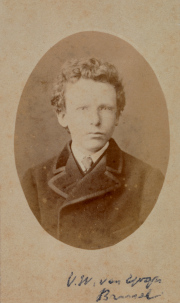 Theo van Gogh at the age of 15 (Amsterdam, Van Gogh Museum / Vincent van Gogh Foundation)
|
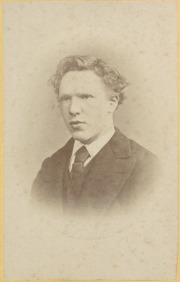 Vincent van Gogh at the age of 19 (Amsterdam, Van Gogh Museum / Vincent van Gogh Foundation)
|
The vast majority of Vincent van Gogh’s extant correspondence is to family members – not only to Theo and Jo, but also to his parents and to Willemien, the sister to whom he was closest. There must have been many more letters he wrote to his parents and siblings that have not survived. Both his father and his grandfather were ministers, and his family upbringing was rooted in the values and virtues of the Christian church. Vincent had few close friends, but the family members were directly involved in each other’s lives, offering practical help and advice.
Vincent’s grandfather, the Reverend Vincent van Gogh (1789–1874) married Elisabeth Huberta Vrijdag (1790–1857) in 1811. He took up his ministry in Breda on 3 November 1822.
Hendrik Vincent van Gogh, ‘Uncle Hein’ (1814-1877), owned a bookshop in Rotterdam. In 1859 he moved to The Hague to run the art gallery belonging to his younger brother Vincent, a branch of the Paris firm Goupil & Cie.150 In 1861, the gallery moved to Plaats 14, and it was here that his nephews worked: Vincent from 1869 to 1873, and Theo from 1873 to 1875. Uncle Hein opened his own gallery in Brussels four years later, but ill health forced him to sell it to Goupil & Cie in 1872. His second wife was Maria van Gogh-Boon (‘Aunt Mietje’).
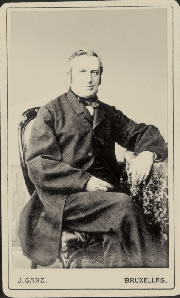
Uncle Hein van Gogh (Amsterdam, Van Gogh Museum / Vincent van Gogh Foundation)
Johannes van Gogh, ‘Uncle Jan’ (1817-1885), joined the navy and rose to the rank of rear admiral. He was director of the Amsterdam naval dockyard when his nephew Vincent was boarding with him in 1877–1878. His son, Hendrik Jacob Eerligh van Gogh, was married to Maria (Marie) Elisabeth Vos. A widower, Uncle Jan went to live in Helvoirt after his retirement with his sister Geertruida, who was married to a naval commander.
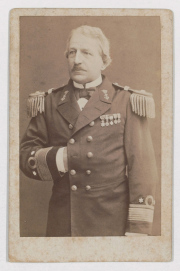
Uncle Jan van Gogh (Amsterdam, Van Gogh Museum / Vincent van Gogh Foundation)
Vincent van Gogh, ‘Uncle Cent’ (1820-1888), was a successful art dealer. In 1858 he became a partner in the firm of Goupil & Cie and moved to Paris. There was a very lucrative market in art reproductions, and he persuaded Goupil to start publishing large engravings after paintings, which proved extremely popular. In 1871 he was forced to retire because of ill health, but he remained a sleeping partner from 1872 to 1878.151 He and his wife Cornelia Carbentus, ‘Aunt Cornelie’ (1829-1913), a sister of Anna van Gogh-Carbentus, moved to a mansion in Princenhage, near Breda. He had a large art collection, chiefly comprising works of the Barbizon and Hague schools.
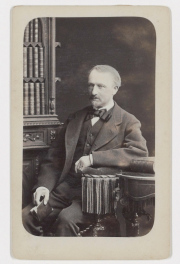
Uncle Vincent van Gogh (Amsterdam, Van Gogh Museum / Vincent van Gogh Foundation)
Theodorus van Gogh, Vincent’s father (1822–1885) went to the Latin School in Breda. Despite poor health, he succeeded in studying theology in Utrecht. After filling various appointments he was called to the living in the village of Zundert on 11 January 1849. On 1 April that year his father confirmed him as a minister in the Dutch Reformed Church. On 21 May 1851 he married Anna Carbentus (1819–1907), daughter of the Hague bookbinder Willem Carbentus (1792–1845). Theodorus belonged to the so-called Groningen School, a nineteenth-century Dutch theological tendency that rejected the restrictions of old orthodox Reformed ideas about man’s relationship with God.
The parsonages occupied by the Reverend Van Gogh, who attached great importance to ethical behaviour and could count on much sympathy from his parishioners, were all in peasant villages in the province of North Brabant. They were Zundert (1849–1871), Helvoirt (1871–1875), Etten (1875–1882) and Nuenen (1882–1885). Mrs van Gogh visited the sick of the parish, and ran a sewing and knitting class in the consistory.
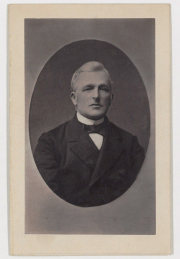 Theodorus van Gogh (Amsterdam, Van Gogh Museum /
Vincent van Gogh Foundation)
|
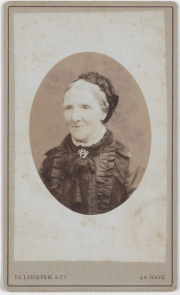 Anna van Gogh-Carbentus (Amsterdam, Van Gogh Museum /
Vincent van Gogh Foundation)
|
Cornelis Marinus van Gogh, ‘Uncle Cor’ (1826-1908), worked as a bookkeeper in his brother Hein’s bookshop and his brother Vincent’s art gallery. In 1849 he set up on his own as a bookseller and art dealer in Amsterdam, and moved into premises in Leidsestraat in 1853. The bookshop and gallery moved to Keizersgracht 453 in 1871. His young nephew Vincent visited the shop in 1877-1878, getting to know books and art. For a while in 1882 it seemed as though Uncle Cor saw some promise in Vincent’s drawings, for he commissioned two series of cityscapes of The Hague from him, but nothing further came of it.
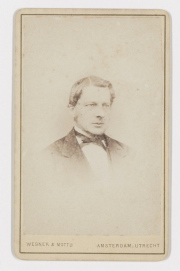
Uncle Cor van Gogh (Amsterdam, Van Gogh Museum / Vincent van Gogh Foundation)
Willemina Catharina Gerardina Carbentus, ‘Aunt Mina’ (1816–1904), sister of Anna van Gogh-Carbentus, married Johannes Paulus Stricker, ‘Uncle Stricker’ (1816–1886). Their daughter, Cornelia Adriana Stricker, ‘Kee Vos’ (1846–1918), married Christoffel Martinus Vos (1841–1878). When Van Gogh lived in Amsterdam, in 1877–1878, his uncle supported him with his theological studies. In 1881 Vincent fell in love with Kee, who had recently been widowed.
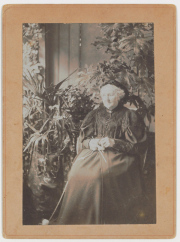 Aunt Mina Stricker-Carbentus (Amsterdam, Van Gogh
Museum / Vincent van Gogh Foundation)
|
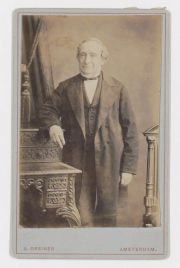 Uncle J.P. Stricker (Amsterdam, Van Gogh Museum /
Vincent van Gogh Foundation)
|
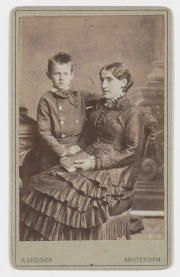
Kee Vos-Stricker with her son Jan, c. 1881 (Amsterdam, Van Gogh Museum / Vincent van Gogh Foundation)
Leonarda Catharina Adriana Stricker (1822–1904) was the second wife of Carl Adolph Haanebeek (1821–1906); their daughter Carolina (Caroline) Adolphina Haanebeek (1852–1926) was married to Willem Jacob van Stockum (1846–1900). Jannetje (Annet) Cornelia Haanebeek (1851–1875) was Caroline’s sister. Caroline and her husband were among Van Gogh’s correspondents.
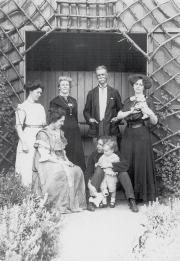
Family photo of Caroline van Stockum-Haanebeek (standing, second from left), 1911 (Amsterdam, Van Gogh Museum / Documentation)
Vincent’s brothers and sisters
Anna Cornelia van Gogh (1855-1930) went to boarding school in Leeuwarden, and lived in England from 1874 to 1876, first in London and then in Welwyn, where she taught French. In 1877 she became a lady’s companion with the Van Houten family in Hengelo, and in 1878 married the son of the house, the shell-lime manufacturer Joan Marius van Houten (1850-1945). They had two daughters.
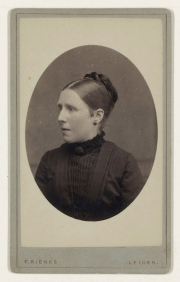
Anna van Gogh (Amsterdam, Van Gogh Museum / Vincent van Gogh Foundation)
Theodorus (‘Theo’) van Gogh (1857-1891) attended high school, and in 1873 went to work for the Goupil gallery, which was later taken over by Boussod, Valadon & Cie. In 1881 he was made manager of the firm’s Boulevard Montmartre branch in Paris, and in April 1889 he married Jo Bonger (1862–1925), in Amsterdam. The couple had met in 1885; she had trained as an English teacher and gave lessons for a while. Nine months later Jo gave birth to a son, Vincent Willem (1890–1978). Theo’s health had always been poor, and he died in January 1891 at the age of 34 of Dementia paralytica, a terminal stage of syphilis. Theo had spent his last years trying to get the work of his brother and other modern artists better known.152
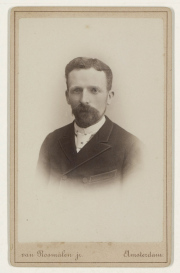 Theo van Gogh, 1889 (Amsterdam, Van Gogh Museum /
Vincent van Gogh Foundation)
|
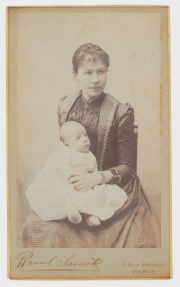 Jo van Gogh-Bonger and her son Vincent Willem, 1890
(Amsterdam, Van Gogh Museum / Vincent van Gogh
Foundation)
|
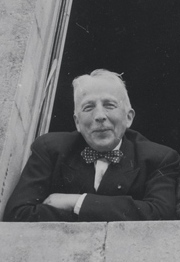
Vincent Willem van Gogh, 1952 (Amsterdam, Van Gogh Museum / Vincent van Gogh Foundation)
Elisabeth (‘Lies’) Huberta van Gogh (1859-1936) went to boarding school in Leeuwarden in 1873, and later to another boarding school in Tiel. In 1878 she failed her examinations in English and French. In 1880 she went to Soesterberg as the companion and carer of Catharina Marianne Louise van Willes, who was married to Jean Philippe Theodore du Quesne van Bruchem (1840-1921), a lawyer and judge. In 1891, two years after his wife’s death, Lies married Jean. They had one child born out of wedlock, Hubertine Normance, to whom Lies gave birth secretly in Saint-Sauveur-le-Vicomte in France, as well as four children after they married. Lies wrote poetry and prose, and made a name for herself with her book Vincent van Gogh. Persoonlijke herinneringen aangaande een kunstenaar (Vincent van Gogh. Personal reminiscences of an artist, 1910), but its many defects made it controversial. It was amended and republished in 1923 as Vincent van Gogh. Herinneringen aan haar broeder (Vincent van Gogh. Reminiscences of her brother).
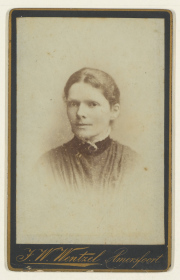
Elisabeth van Gogh (Amsterdam, Van Gogh Museum / Vincent van Gogh Foundation)
Willemien (‘Wil’) Jacoba van Gogh (1862-1941) travelled to England with her sister Anna at the age of thirteen, and remained there for nine months. In 1879-1880 she attended a private school in Den Bosch, and then went to work as a nanny. She never married, and lived with her mother. In 1888 she spent a few weeks with Theo in Paris, where she returned in 1890 to visit Theo, Jo and their newborn son. Willemien worked briefly as a nurse in the Walloon hospital in Leiden. She was the only sister with whom Vincent corresponded regularly in his final years. In December 1902 she was admitted as a patient to the Psychiatric Institution in Veldwijk, where she remained until her death in 1941. The diagnosis was Dementia praecox. She barely spoke for decades, and was fed artificially.153
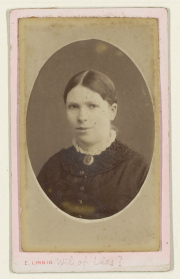
Willemien van Gogh (Amsterdam, Van Gogh Museum / Vincent van Gogh Foundation)
Cornelis (‘Cor’) Vincent van Gogh (1867-1900) attended high school, and in 1884 became an apprentice at the engineering works of Egbert Haverkamp Begemann in Helmond. He worked in England for a while, in a factory in Lincoln, and in 1889 left for South Africa, where he worked for the Cornucopia Gold Company near Johannesburg. He also worked as a civil servant with the Netherlands South African Railway Company. In 1898 he married Anna Catherine Fuchs in Pretoria, but the marriage lasted only eight months. Cor fought as a volunteer in the Boer War. He committed suicide in 1900.154
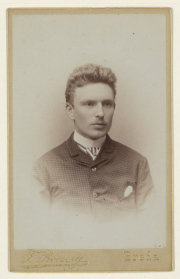
Cor van Gogh (Amsterdam, Van Gogh Museum / Vincent van Gogh Foundation)